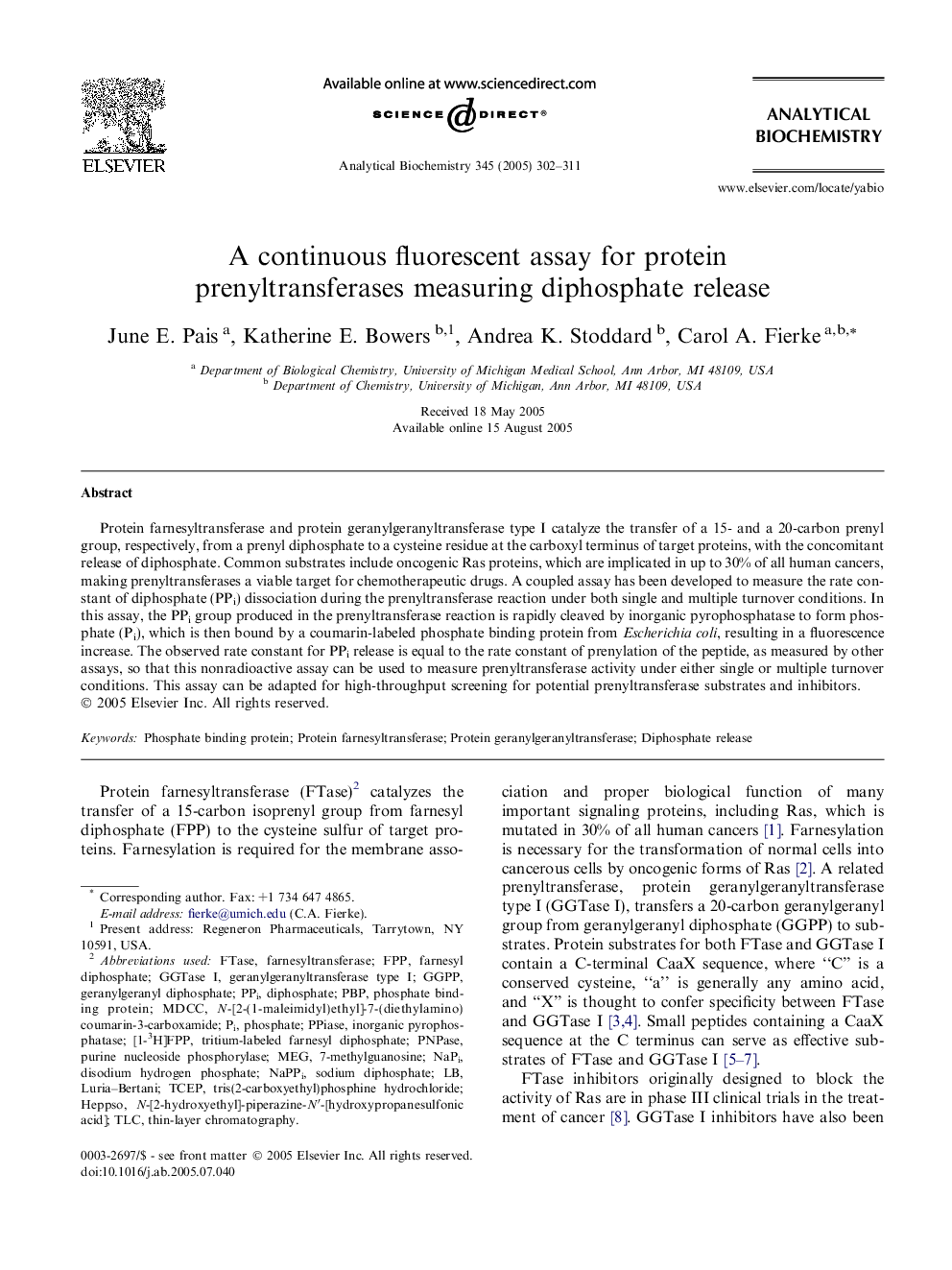| Article ID | Journal | Published Year | Pages | File Type |
|---|---|---|---|---|
| 10533053 | Analytical Biochemistry | 2005 | 10 Pages |
Abstract
Protein farnesyltransferase and protein geranylgeranyltransferase type I catalyze the transfer of a 15- and a 20-carbon prenyl group, respectively, from a prenyl diphosphate to a cysteine residue at the carboxyl terminus of target proteins, with the concomitant release of diphosphate. Common substrates include oncogenic Ras proteins, which are implicated in up to 30% of all human cancers, making prenyltransferases a viable target for chemotherapeutic drugs. A coupled assay has been developed to measure the rate constant of diphosphate (PPi) dissociation during the prenyltransferase reaction under both single and multiple turnover conditions. In this assay, the PPi group produced in the prenyltransferase reaction is rapidly cleaved by inorganic pyrophosphatase to form phosphate (Pi), which is then bound by a coumarin-labeled phosphate binding protein from Escherichia coli, resulting in a fluorescence increase. The observed rate constant for PPi release is equal to the rate constant of prenylation of the peptide, as measured by other assays, so that this nonradioactive assay can be used to measure prenyltransferase activity under either single or multiple turnover conditions. This assay can be adapted for high-throughput screening for potential prenyltransferase substrates and inhibitors.
Related Topics
Physical Sciences and Engineering
Chemistry
Analytical Chemistry
Authors
June E. Pais, Katherine E. Bowers, Andrea K. Stoddard, Carol A. Fierke,
